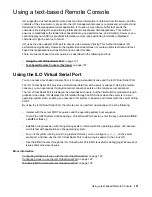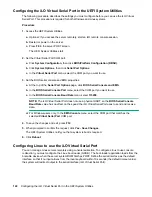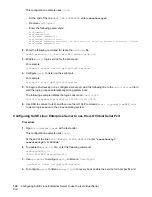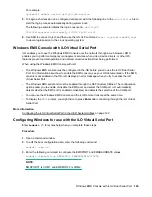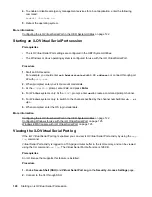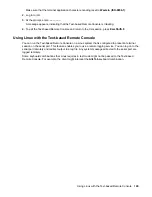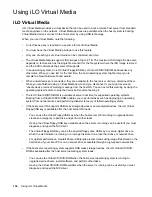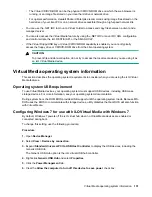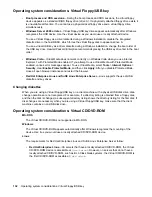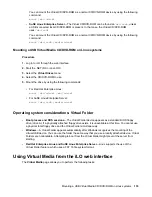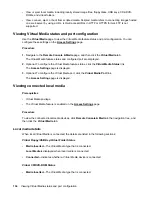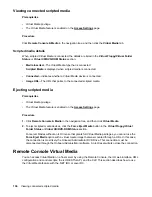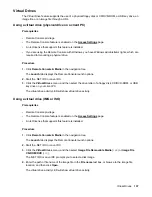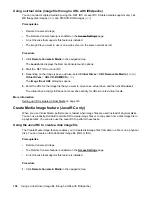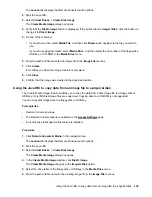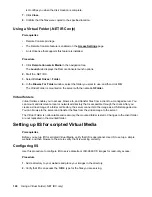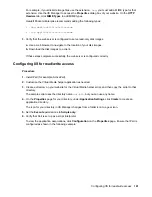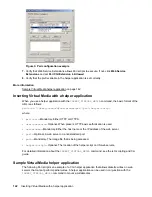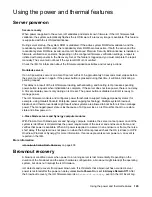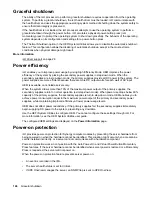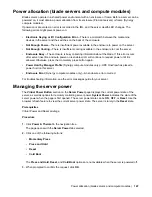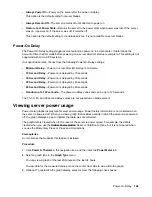
• View or eject local media, including locally stored image files, floppy disks, USB keys, CDs/DVD-
ROMs, and virtual folders.
• View, connect, eject, or boot from scripted media. Scripted media refers to connecting images hosted
on a web server by using a URL. iLO will accept URLs in HTTP or HTTPS format. FTP is not
supported.
Viewing Virtual Media status and port configuration
Use the
Virtual Media
page to view the Virtual Media feature status and port configuration. You can
configure these settings on the
page.
Procedure
1.
Navigate to the
Remote Console & Media
page, and then click the
Virtual Media
tab.
The Virtual Media feature status and configured port are displayed.
2.
Optional: To configure the Virtual Media feature status, click the
Virtual Media Status
link.
The
Access Settings
page is displayed.
3.
Optional: To configure the Virtual Media port, click the
Virtual Media Port
link.
The
Access Settings
page is displayed.
Viewing connected local media
Prerequisites
• Virtual Media privilege
• The Virtual Media feature is enabled on the
Procedure
To view the connected local media devices, click
Remote Console & Media
in the navigation tree, and
then click the
Virtual Media
tab.
Local media details
When local Virtual Media is connected, the details are listed in the following sections:
Virtual Floppy/USB Key/Virtual Folder Status
•
Media Inserted
—The Virtual Media type that is connected.
Local Media
is displayed when local media is connected.
•
Connected
—Indicates whether a Virtual Media device is connected.
Virtual CD/DVD-ROM Status
•
Media Inserted
—The Virtual Media type that is connected.
134
Viewing Virtual Media status and port configuration


